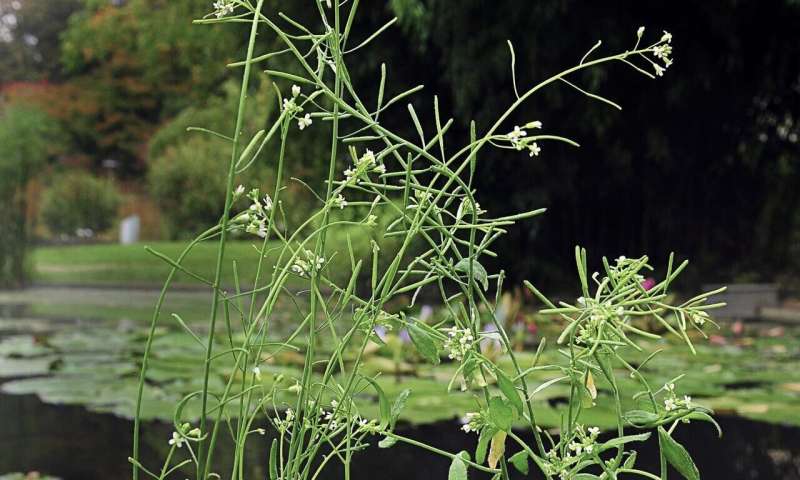A matter of concentration

Plants can grow whole new organs with the help of pluripotent stem cells throughout their entire lives. When necessary, these stem cells can develop into any type of cell within an organism. The biologist Prof. Dr. Thomas Laux and his plant genetics research group at the University of Freiburg, who are studying how the balance between stem cells and specialized cells is regulated in plants, have determined that the concentration of so-called Argonaute proteins, such as AGO1 and ZLL/AGO10, plays a central role in this process. The team recently published their findings in the scientific journal Plant Communications. First author is Dr. Fei Du.
Using the model plant Arabidopsis thaliana, or mouse-ear cress, the scientists have researched how the concentration of Argonaute proteins affects the ratio of stem cells to differentiated cells, such as flower or leaf cells. The Argonaute proteins AGO1 and ZLL/AGO10 are key factors in RNA interference, a process in which the transfer of genetic information is inhibited. Because AGO1 destroys messenger RNA, which are vital for the maintenance of stem cells, this promotes cell differentiation—in other words, their development into specialized cell types. Laux's research group has discovered that the exact opposite occurs when there is a high concentration of AGO1. In this case, the protein protects the messenger RNA from degrading and prevents the cells from differentiating, promoting the maintenance of stem cells.
As a result, the scientists have demonstrated that the balance between stem cells and differentiated cells depends on the exact concentration of Argonaute proteins—and that the activity of these proteins is completely reversed when their concentration exceeds a certain level. This means that scientists could use these proteins in biotechnology to cultivate stem cells or to develop organs—for example, a small number of cultivated stem cells could be used to reproduce plants that are able to better adapt to changes in the environment.
More information: Fei Du et al, Dose-Dependent AGO1-Mediated Inhibition of the miRNA165/166 Pathway Modulates Stem Cell Maintenance in Arabidopsis Shoot Apical Meristem, Plant Communications (2019). DOI: 10.1016/j.xplc.2019.100002
Provided by University of Freiburg



















